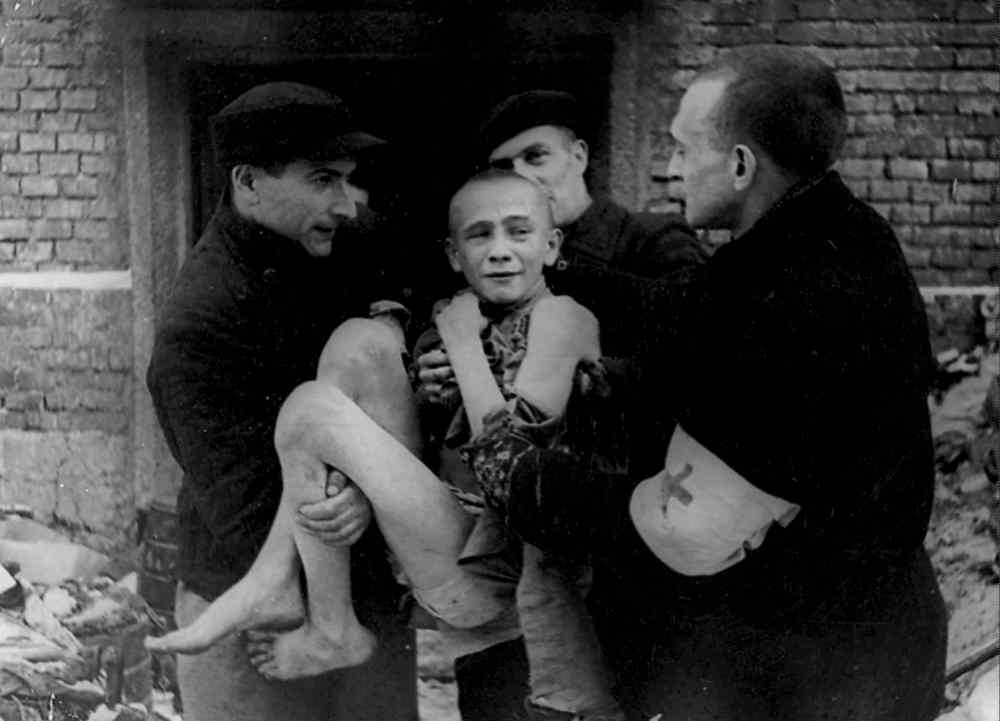Haunting photos question our ability to comprehend inhumanity
Advertisement
Read this article for free:
or
Already have an account? Log in here »
To continue reading, please subscribe:
Monthly Digital Subscription
$0 for the first 4 weeks*
- Enjoy unlimited reading on winnipegfreepress.com
- Read the E-Edition, our digital replica newspaper
- Access News Break, our award-winning app
- Play interactive puzzles
*No charge for 4 weeks then price increases to the regular rate of $19.00 plus GST every four weeks. Offer available to new and qualified returning subscribers only. Cancel any time.
Monthly Digital Subscription
$4.75/week*
- Enjoy unlimited reading on winnipegfreepress.com
- Read the E-Edition, our digital replica newspaper
- Access News Break, our award-winning app
- Play interactive puzzles
*Billed as $19 plus GST every four weeks. Cancel any time.
To continue reading, please subscribe:
Add Free Press access to your Brandon Sun subscription for only an additional
$1 for the first 4 weeks*
*Your next subscription payment will increase by $1.00 and you will be charged $16.99 plus GST for four weeks. After four weeks, your payment will increase to $23.99 plus GST every four weeks.
Read unlimited articles for free today:
or
Already have an account? Log in here »
Hey there, time traveller!
This article was published 15/07/2014 (4152 days ago), so information in it may no longer be current.
What does it mean to witness atrocity? This question lies at the heart of Photrocity, an upcoming exhibition of 19 Second World War photographs from the Sovfoto Archive, a large collection of official Soviet press photographs recently acquired by MacLaren Art Centre, located in Barrie, Ont.
The exhibition’s images depict violent death, mutilation, grief, and survival along the Eastern Front from 1941 to 1945. Some photographs show acts of mourning and the massive destruction of property. Others focus on the bodies of men, women and children murdered or maimed by the Nazis. A couple are dark touristic souvenirs confiscated from captured or killed Wehrmacht soldiers, and others document such murderous technologies as canisters of the toxic pesticide used in gas chambers, and a well-used executioner’s chopping block.
In addition to its original caption, each photograph has been provided with a story fragment by the writer Struan Sinclair. These texts and images encourage us to reflect on the kind of work we expect atrocity photographs to do. Such reflection is necessary because atrocity photographs lie at the heart of an apparent paradox. On one hand, they have done more to expose the workings of violence and its aftermaths than any other 20th-century medium. Yet on the other, this exposure hasn’t decreased violence or obviously increased public empathy.

One reason for these failures to make a difference concerns the scale and horror of atrocious events. Photographs depicting atrocity and massive suffering severely tax the cognitive and emotional resources of viewers, often overwhelming, if not destroying, their ability to make sense of what they see. New York University Prof. Susie Linfield says the closer we get to atrocity via photography, “the further the comprehensible world recedes; the more one knows, the less one understands.” Here Linfield echoes the philosopher Theodor Adorno, who referred to the Holocaust as “the extremity that eludes the concept.” For Adorno, the Nazi genocide was simply too massive and awful to be conceived. Its component parts could be described, yes, but it could never be imagined in its entirety.
Similarly, Holocaust survivor Primo Levi has argued that not even those emerging on the other side of mass violence, as survivors, can understand the full enormity of their experience. Levi explains the only ones possessing this knowledge are destroyed in the moment of its acquisition: “We who survived the camps are not true witnesses. We… never touched bottom. Those who have, and who have seen the face of the Gorgon, did not return, or returned wordless.”
Despite the challenges of bearing witness, it is worth noting the images contained in Photrocity depict actual people damaged by extreme acts of real violence. Such photographs can therefore serve as evidence of atrocious harms, and in contexts such as legal trials or historical works they may play a significant role in specifying the causes of suffering and assigning responsibility and blame. More than this, as “official” representations, the Sovfoto photographs reveal facets of Soviet mentality as it evolved during the war. Every Photrocity image depicts an aspect of the Great Patriotic War as the Soviets wanted it to seem, and these wants varied as Soviet soldiers changed from defenders, to liberators, to occupiers by war’s end.
Nevertheless, these photographs do not immediately or fully disclose their meaning. The intensity of the emotions they evoke, along with the profound beauty of some of them and their peculiarities — such as Soviet censors’ decision to hand-alter pictures of corpses to make them seem more beautiful and alive — prevents any image from seeming obvious or easy to comprehend.
This complexity and difficulty sticks in the mind long after experiencing the exhibition, making Photrocity tough to shake. Such stickiness calls to mind Susan Sontag’s insight that “harrowing photographs do not inevitably lose their power to shock. But they are not much help if the task is to understand. Narratives can make us understand. Photographs do something else: They haunt us.”
Photrocity runs from July 15 to Oct. 31 at the University of Manitoba’s School of Art Gallery, 180 Dafoe Rd. For more information, call 204-474-9322.
Adam Muller is the curator of Photrocity: Mass Violence and its Aftermaths in the Sovfoto Archive. He is an associate professor and genocide scholar in the University of Manitoba’s Department of English, Film and Theatre.


